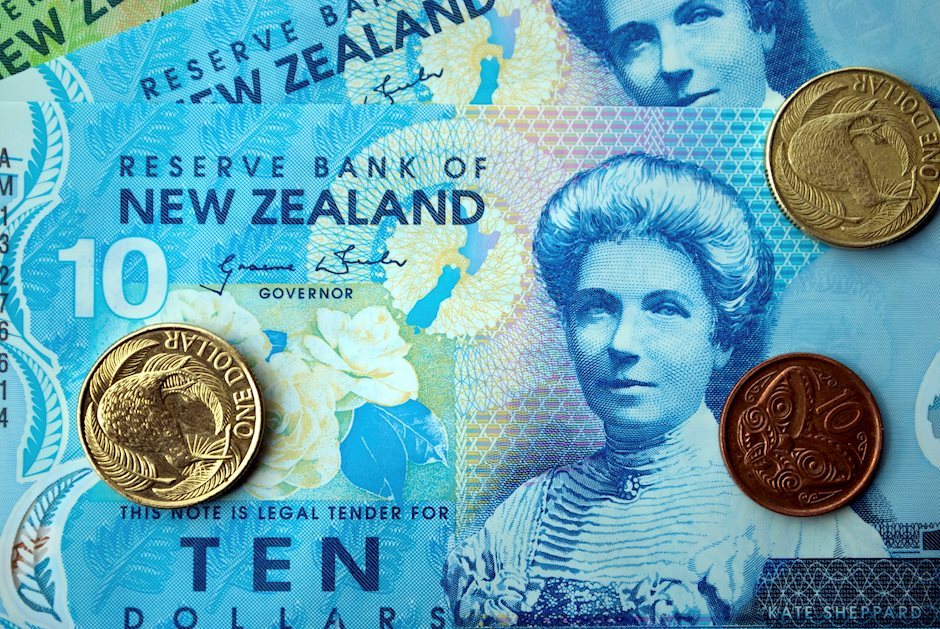NZD/USD Price Forecast: Posts fresh two-month low near 0.6020
- NZD/USD retreats to 0.6020 as the US Dollar extends its upside.
- Dismal market sentiment due to US political uncertainty weighs on risk-sensitive assets.
- NZD/USD stays below the 61.8% Fibo retracement.

The NZD/USD pair falls back to near 0.6020 after a short-lived recovery in Wednesday’s European session. The Kiwi pair faces pressure as rising US Treasury yields have strengthened the US Dollar (USD) further. 10-year US bond yields rise to an almost 12-week high near 4.22% amid uncertainty over United States (US) presidential elections and Middle East risks staying afloat.
The US Dollar Index (DXY), which tracks the Greenback’s value against six major currencies, climbs to near 104.40.
The outlook of the US Dollar has strengthened further as the International Monetary Find (IMF) has upwardly revised US growth projections for the current and the next year. The IMF expects the US economy to end 2024 and 2025 year with a Gross Domestic Product (GDP) growth of 2.8% and 2.2%, respectively.
Meanwhile, the New Zealand Dollar (NZD) remains fragile due to dismal market sentiment. A sharp decline in S&P 500 futures in European trading hours suggests weakness in investors’ risk appetite.
NZD/USD posts a fresh two-month low near 0.6020. The Kiwi pair resumed its downside journey after retreating from the 61.8% Fibonacci retracement around 0.6050. The Fibo tool is plotted from the July 29 low at 0.5857 to the September 30 high at 0.6380.
A bear cross, represented by the 20- and 50-day Exponential Moving Averages (EMAs) near 0.6150, suggests a downside trend.
The 14-day Relative Strength Index (RSI) oscillates below 30.00, indicating a strong bearish momentum.
More downside is highly likely towards the August 15 low of 0.5974 and the round-level support of 0.5900 if the pair breaks below the psychological support of 0.6000.
On the flip side, a reversal move above the October 8 high of 0.6146 will drive the asset towards October 7 high at 0.6173 and the October 4 high near 0.6220.
NZD/USD daily chart
New Zealand Dollar FAQs
The New Zealand Dollar (NZD), also known as the Kiwi, is a well-known traded currency among investors. Its value is broadly determined by the health of the New Zealand economy and the country’s central bank policy. Still, there are some unique particularities that also can make NZD move. The performance of the Chinese economy tends to move the Kiwi because China is New Zealand’s biggest trading partner. Bad news for the Chinese economy likely means less New Zealand exports to the country, hitting the economy and thus its currency. Another factor moving NZD is dairy prices as the dairy industry is New Zealand’s main export. High dairy prices boost export income, contributing positively to the economy and thus to the NZD.
The Reserve Bank of New Zealand (RBNZ) aims to achieve and maintain an inflation rate between 1% and 3% over the medium term, with a focus to keep it near the 2% mid-point. To this end, the bank sets an appropriate level of interest rates. When inflation is too high, the RBNZ will increase interest rates to cool the economy, but the move will also make bond yields higher, increasing investors’ appeal to invest in the country and thus boosting NZD. On the contrary, lower interest rates tend to weaken NZD. The so-called rate differential, or how rates in New Zealand are or are expected to be compared to the ones set by the US Federal Reserve, can also play a key role in moving the NZD/USD pair.
Macroeconomic data releases in New Zealand are key to assess the state of the economy and can impact the New Zealand Dollar’s (NZD) valuation. A strong economy, based on high economic growth, low unemployment and high confidence is good for NZD. High economic growth attracts foreign investment and may encourage the Reserve Bank of New Zealand to increase interest rates, if this economic strength comes together with elevated inflation. Conversely, if economic data is weak, NZD is likely to depreciate.
The New Zealand Dollar (NZD) tends to strengthen during risk-on periods, or when investors perceive that broader market risks are low and are optimistic about growth. This tends to lead to a more favorable outlook for commodities and so-called ‘commodity currencies’ such as the Kiwi. Conversely, NZD tends to weaken at times of market turbulence or economic uncertainty as investors tend to sell higher-risk assets and flee to the more-stable safe havens.
Author

Sagar Dua
FXStreet
Sagar Dua is associated with the financial markets from his college days. Along with pursuing post-graduation in Commerce in 2014, he started his markets training with chart analysis.


















